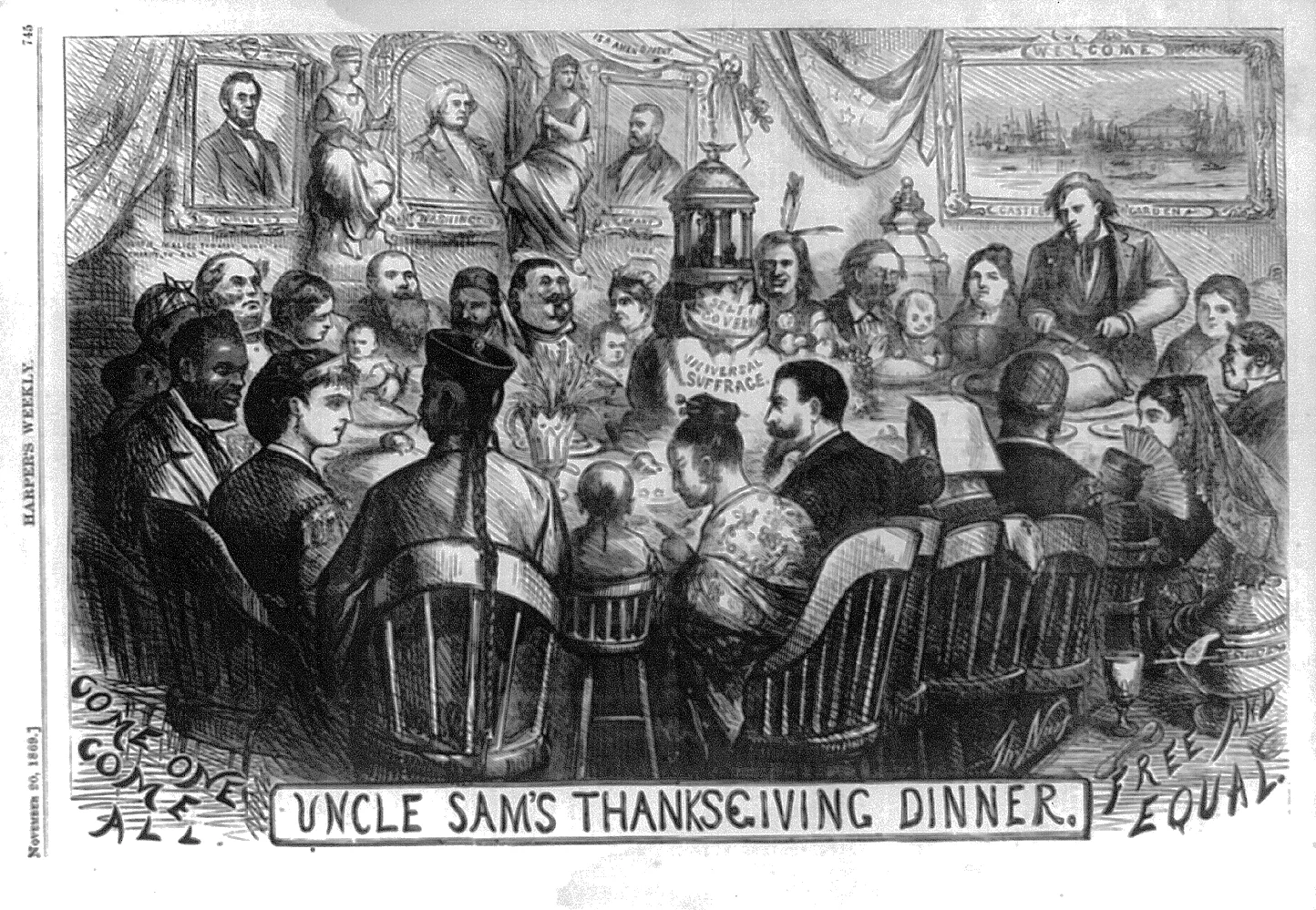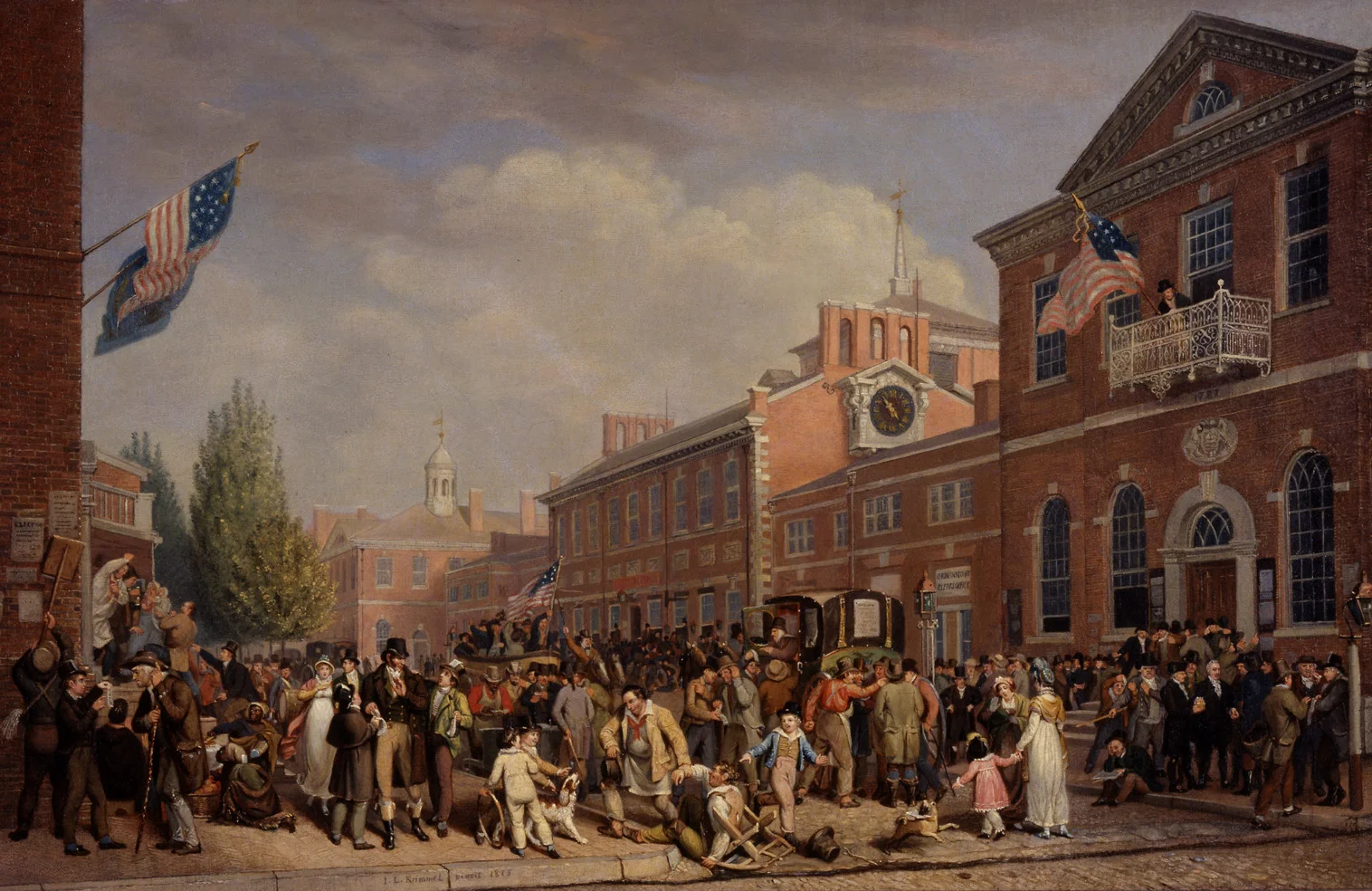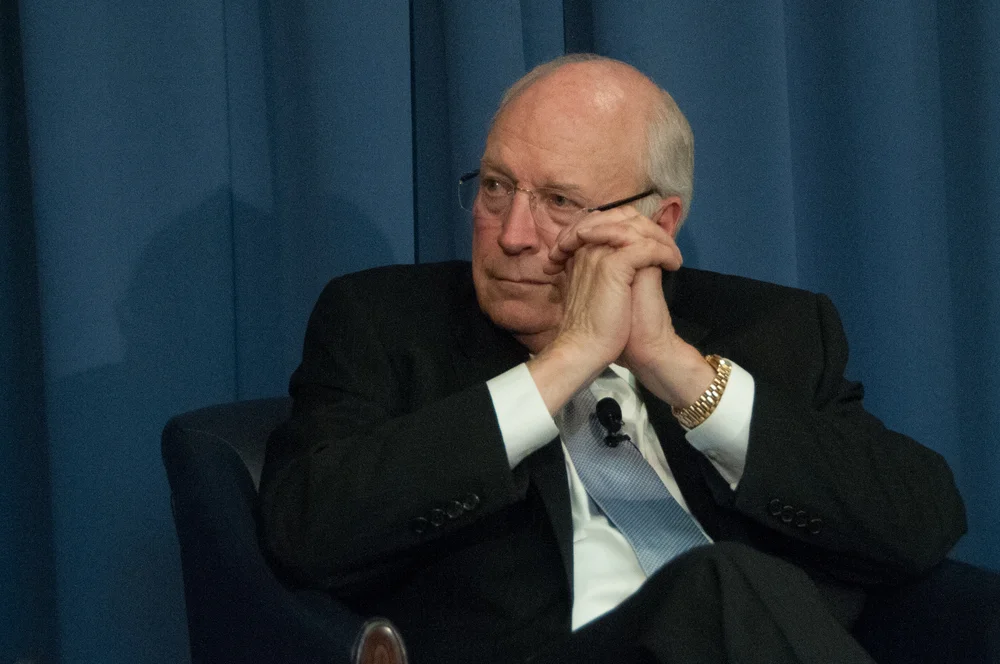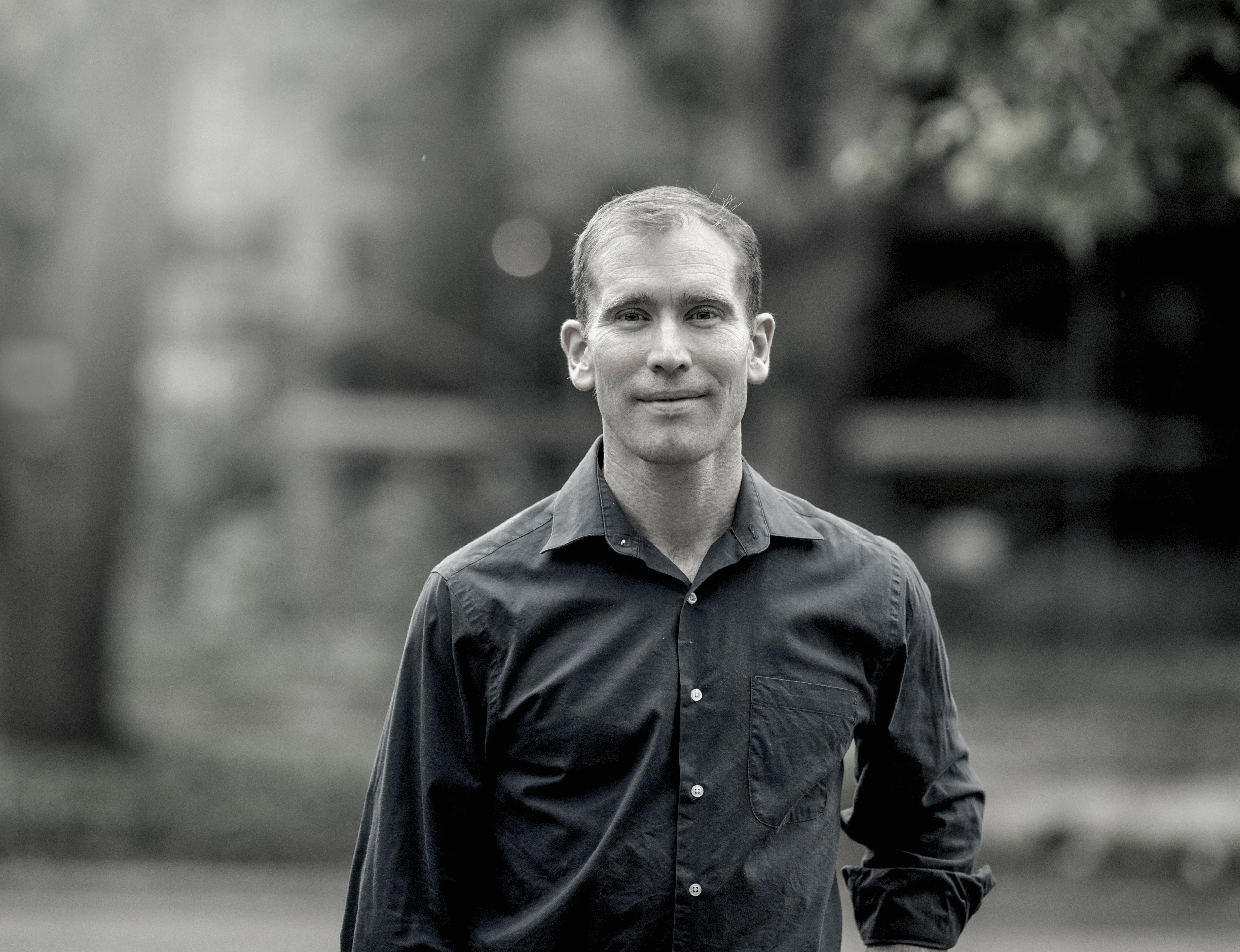.webp)
What Evil Can and Cannot Teach Us
Evil is literally nothing, a void. We learn best from the merits of creation, love, and communion.
In his 30s, the crime-writer-turned-podcaster Andrew Klavan read the Marquis de Sade. Then an atheist, Klavan was struck by Sade’s rejection of human sympathy and an objective moral order. Klavan found Sade coherent, compelling, and repellent. On a gut level, Klavan knew that sadism was evil. But condemning it as such would require an objective moral order, which in turn would require some kind of God. That’s how Klavan’s thinking would read if mapped out as an argument, but he describes it more as a gut-level conviction, “the one and only unreasoned leap of faith I ever made in the progress of my conversion” to Christianity. In The Kingdom of Cain, Klavan seeks to provoke a similar leap of faith in his readers: to get them to consider God and morality by meditating on murder and the act of artistic creation.
Throughout the book, Klavan returns to the “Great Speculation,” an axiom that he argues grounds all real systems of morality:
This is the self-evident truth that other people are as real to themselves as you are to you and all are equally dear to God. I can’t prove these two assertions, but if you remove the first one, you have no basis for acting morally and if you remove the second one, you have no reason for it.
This leaves human beings with a choice between the moral order of Jesus and that of Sade, with no coherent middle ground between the two. And it gives Klavan his definition of evil as acting against the moral order that God has inscribed on the universe and in the human heart. Murder, then, is evil “because to kill someone without just cause is a complete denial of that person’s reality and an offense against the God who holds that reality dear.”
Klavan also argues that artistic creation is the telos of love and is capable of transforming its subject into itself, even if that subject is murder. Art can thereby in some way redeem or elevate even the greatest evil:
When an artist uses his imagination to create a true work of art about murder, he is confronting death with art, making creation out of destruction, containing evil within an act of love. . . . To write about murder and the imagination is to write about confronting evil, which is the absence of love, with creation, which is the telos of love—love, which is the source of joy.
The remainder of the book studies three murders and their portrayals in art to explore the nature of evil, followed by three reflections on “creative practices of truth and beauty that allow one to confront this evil with love and, through love, with joy.” The first chapter looks at cases of aspiring übermenschen, murderers who thought themselves above the rest of their fellow men and therefore above the rules of society. Chief among them are Nathan Leopold and Richard Loeb—the rich young men who murdered a boy in their neighborhood just as “an experiment” in Chicago in 1924—and Dostoevsky’s Raskolnikov from Crime and Punishment.
Klavan sees the dichotomy between the Marquis de Sade and Christ present again in the juxtaposition of Dostoevsky and Nietzsche: both writers understood that as Christianity receded, Europe’s moral framework would collapse. One hoped and the other feared that it would be replaced by a world in which men with superior qualities would live lives of greatness, exempt from the restrictions placed on the ordinary.
In subsequent chapters, Klavan examines the American serial killer Ed Gein and the classic films inspired by his case: Psycho, The Texas Chainsaw Massacre, and The Silence of the Lambs. These show the consequences of atheistic materialism that reduces human beings to their bodies in a world without meaning or moral order. He also reflects on the story of Cain and Abel, marriage and holy communion as schools of ritual, and talk therapy.
Klavan ends with a thought experiment, walking the reader through a museum cataloguing the history of Western art. After the emptiness of contemporary art, we return to Michelangelo’s Pietà as the ultimate example of art redeeming murder:
Look at this marble mother of mercy mourning the death of her sacrificed son. If out of this ultimate depth of suffering, if out of this infinite darkness of grief, if out of this cosmic catastrophe of injustice, the hands of a mortal man can sculpt such perfect beauty, then what beauty can God not carve out of this sorrowful world in the liquid white marble of eternity?
In a 2002 address, Joseph Ratzinger (who would later become Pope Benedict XVI) wrote that “True knowledge is being struck by the arrow of beauty that wounds man. . . . Being overcome by the beauty of Christ is a more real, more profound knowledge than mere rational deduction.” Klavan concurs, though his book operates in reverse: knowledge of evil should give us a more profound understanding of the need for and existence of a moral order and God. This is true up to a point, but there are three problems with The Kingdom of Cain.
First, the Great Speculation, as Klavan frames it, is historically false. The thought of classical philosophers such as Plato, Aristotle, and Cicero offers many bases and reasons for acting morally, even if they do not accept that all human beings have equal dignity. For this reason, Christian authors would use the teachings of Jesus to correct and advance classical moral philosophy, not discard it. Klavan is correct that many today attempt to keep Christian moral values they like while discarding the Christian beliefs that underpin them, and that this ultimately falls apart. But Aristotle can give a robust account of morality based on the order and value of human nature and the cosmos, even if a Christian would argue that women and slaves share more fully in that human nature than he thought.
Second, Klavan claims that the telos of love is creation, and it is on this ground that art can, in some way, redeem evil. But in Christian thought, the telos of love is communion, out of which creation can subsequently emanate. The “end” of the Trinity — insofar as one could claim that it has one — is not the creation of the world, but the mutual love of the Father, Son, and Holy Spirit. The end of a friendship is the friends’ enjoyment of each other and of the good. In both cases, that love or good may be diffusive of itself. The love of the Trinity bubbles over into the creation of the world, the love of a marriage brings children, and friends can inspire each other to personal growth or works of art. But those products of love are not its ultimate end. If love is the antithesis of evil, some form of communion—not creation or art — is the way to redeem or defeat it ultimately. This is why Christianity claims that God’s ultimate answer to evil is not artistic creation but Christ becoming human and suffering through our rejection and malice to the point of torture and death, and thereby overcoming them.
Third, like Augustine and other Christian thinkers, Klavan thinks that evil is ultimately a privation of or departure from the good. But this means that evil doesn’t work the way the good does. If evil is a departure from the moral and rational order of the universe — a departure from being itself — then it is literally nothing. There is nothing to grasp, only a void. We can marvel at Ed Gein’s crimes or at a baby’s smile, and we can have a sense that both escape our understanding. But that’s because at the heart of murder, there is nothing to understand, while behind the baby, there is more meaning than we could ever understand. Klavan is right that looking into the void of evil can point us toward the good, which it negates; however, we can progress in our understanding of the world and ourselves much more by focusing on the good.
When Klavan sees the Pietà, he is moved to an a fortiori argument: if a human being can make this out of evil, then how much more can God make greater beauty come from evil. This is true as far as it goes. But further reflection on beauty and the cross might run something like this. The physical perfection of the Pietà masks the gruesomeness of Christ’s suffering and death, thereby amplifying and allowing us to better perceive the beauty of what Christ did in embracing such evil. It drives home to us how, in the words of Hans Urs von Balthasar, Christ’s passion “corresponds to [God’s] absolute being and essence to reveal himself in his unfathomable and absolutely uncompelled freedom as inexhaustible love.” The thing that makes Christ’s suffering unique is that it reveals the nature of God and answers the void of evil with abundant, unconquerable goodness.
In short, there may be a sense in which Thomas Harris brought good out of Ed Gein’s killings by writing The Silence of the Lambs. But there are richer and deeper ways to overcome evil with good.
Nathaniel Peters is the director of the Morningside Institute and a contributing editor for Public Discourse.
Pursuit of Happiness

A National Day of Gratitude
Washington’s Proclamation expressed hope that God would “render our national government a blessing to all the people, by constantly being a Government of wise, just, and constitutional laws, discreetly and faithfully executed and obeyed…”

Freedom, Liberalism, and Civic Communion
Are we capable of living in civic communion as a republican people, a people who need nation, family, and religion to form and expand their capacities for moral reflection, responsibility, and conscience?
Civitas Outlook

Will State Attorneys General Allow Their Cities to Make Energy Policy?
The effort to apply state law to redress climate injuries has been spearheaded not by state officials eager to protect their home turf, but by international non-profits, NGOs, and out-of-state private law firms frequently representing local governments.
Get the Civitas Outlook daily digest, plus new research and events.
Ideas for
Prosperity










